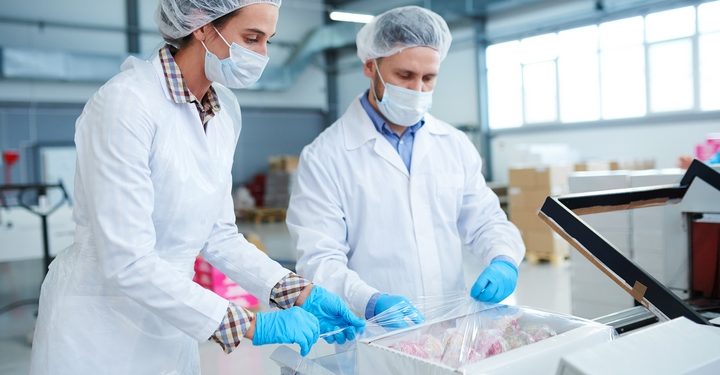6 Types of Food Contamination in Manufacturing

Contaminated food poses a myriad of health hazards when consumed. However, beyond these health hazards, the financial losses arising from such food, especially during manufacturing, can threaten the survival of your business. To avoid contamination, food needs to be processed and stored under the right conditions, especially at the manufacturing stage where it is vital to maintain the purity and integrity of food in terms of freshness.
It is also important to ensure that both the tools and the workers handling the food adhere to the highest hygiene stands to minimize or eliminate chances of contamination. There are many ways food can get contaminated. The following, however, are the most common types of food contamination.
1. Biological Contamination

This type of contamination occurs when toxins and bacteria infect edibles, a leading cause of food spoilage and poisoning. Food poisoning occurs when one consumes contaminated food. Bacteria are tiny microorganisms that split and spread rapidly. For instance, in just seven hours, a single bacteria can break down multiple times, sometimes into as many as two million units.
There are some bacteria, for instance, listeria, staphylococcus, and salmonella, which are highly toxic, even by themselves. In some cases, the process by which bacteria produce waste and multiply is what makes it toxic, not the bacteria itself. However, not all bacteria are harmful. There are some that are beneficial, especially those in yogurt. Proper food safety procedures, along with a regular packaging seal integrity testing process, will check the spread of harmful bacteria to ensure the safety of food.
Although bacteria are everywhere, they are invisible to the naked eye. Favourite spots for bacteria growth include raw meat, the human body, dust, clothing, pests and pets, the air, among others.
2. Chemical Contamination

This type of contamination occurs when chemicals get into contact with food. Among popular chemical contamination sources are unsafe plastic food containers, kitchen cleaning agents, unwashed vegetables and fruits, chemicals used to maintain equipment, and pest control products.
3. Physical Contamination

In physical contamination, objects that come into contact with food end up contaminating them. Physically contaminated food can also get biologically contaminated since the objects (for instance, a fingernail) may contain harmful bacteria. Sources of physical contamination include hair, jewellery, metal, glass, pests, nails, and dirt.
4. Cross-Contamination

This type of contamination occurs through cross transfer of pathogens (bacteria) between objects. For instance, dirty clothes can transfer bacteria from one location to another. To prevent such contamination, replace clothing when working in a new area and wash your hands and face, especially when working with high-risk foods or allergens.
Other causes of cross-contamination include contaminated utensils, poor personal hygiene, or touching your face before handling food. Pests such as rats, cockroaches, and flies transport dangerous bacteria from place to place.
When stored raw food gets into contact with cooked food, there is a likelihood of contamination of the raw food. To avoid this type of contamination, cover and store raw food below cooked foods. Another source of cross-contamination is waste, especially when it’s not sealed and stored appropriately. Make sure such waste is stored a safe distance from the kitchen to prevent contact with food preparation. Also regularly clean and sanitize trash cans to avoid pests’ infestation.
5. Pre-Processing Contamination

This is very common in slaughterhouses where meats are often intermingled before and after slaughter, which results in contamination. Bacteria or pathogens can also come into contact with food while it’s in transit, especially when it’s lying idle at the back of a truck on a hot day. This could get worse if the food is not adequately heated or cooled. Even if there are only a few microbes in the food, it could get severely contaminated when in transit.
6. Processing Contamination

Contamination may occur at the food processing stage. It could be caused by contaminants such as pesticides, metal shavings, and chemicals that are used to run and maintain machinery. To avoid such contamination, invest in safety measures that protect food from contamination, especially at the manufacturing stage. When food processing equipment is not properly maintained, or the ventilation system is ineffective, the likelihood of contamination is high.
Food can get contaminated at any stage in the manufacturing process. This can happen if it comes into direct contact with contaminated objects, or via biological or chemical contamination. Other types of food contamination include cross- and physical contamination. Contamination may also occur during the pre-processing and the processing stage in the manufacturing process. This type of food contamination can often be tested for its package integrity.
To keep off contaminants, freeze or use high heat when processing or preserving food. Besides, it is essential that staff handling food observe the highest hygiene standards possible. The tools and other equipment used to manufacture food should also be appropriately sanitized to rid them of allergens and pathogens. In some cases, you may have to dispose of contaminated food to keep the contamination from spreading.


